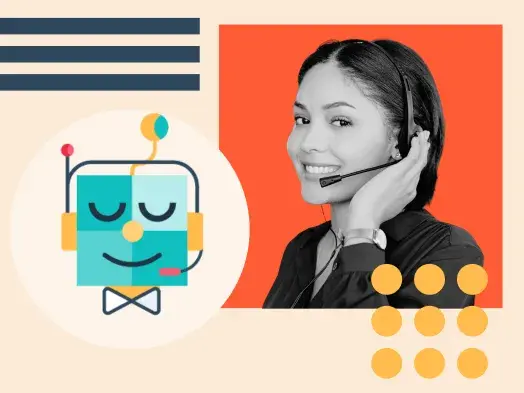As a busy professional, waiting on hold to get a simple answer can be a waste of time. In fact, “74% of Americans say contacting customer service is a frustrating experience, and 44% would rather spend 30 minutes cleaning a bathroom than waiting on hold for a support agent.” Yikes.
It’s exciting that brands are listening to this consumer preference and are adopting live chat as a primary support channel.
In this post, we‘ll discuss the risk that AI and bots pose to customer service jobs. Then, we’ll provide seven ways to rethink customer support using this technology. Finally, we will discuss how AI and bots will impact us in 2024.
Will AI and bots impact service jobs?
It's undeniable that AI and bot technology have had a significant impact on customer service. Rather than replacing the role of the customer service agent, AI has optimized workflows by automating routine processes and providing 24/7 support features.
Some people still feel that this technology will eventually take their jobs, but for now, it continues to be an asset for customer service teams.
Currently, it doesn't appear that AI is reducing the demand for customer service agents. While some trends do suggest that jobs will be lost to AI in the future, others indicate that the customer service and success fields won't be impacted by this decline.
According to HubSpot's own State of AI Survey, AI has the potential to positively impact service jobs, with 35% of customer support specialists responding that AI can help them “spend less time on manual tasks (data entry, scheduling meetings, etc.)”.
Let's take a closer look at these findings and determine whether or not service jobs are at risk of being replaced by AI.
Will AI put service jobs at risk?
With the use of bots projected to increase, there's no doubt that AI and automation will replace some jobs over time. Historically, jobs are replaced when a more cost-effective solution is provided to a business.
In fact, the World Economic Forum predicts that “by 2025, automation and a new division of labor between humans and machines will disrupt 85 million jobs globally in medium and large.”
The good news is that AI creates jobs as well. The World Economic Forum also predicts that automation will create 97 million new jobs by 2025. Of those jobs, 37% would be in the customer care industry.
According to WEF,“tasks where humans are set to retain their comparative advantage include managing, advising, decision-making, reasoning, communicating and interacting.”
The potential for innovation brings other benefits as well. “Remember when you first got Siri or Alexa and how it was amazing. That pales in comparison to what is coming with self-learning chatbots. ChatGPT has shown us where we are heading. The future is amazing, and the future is here,” writes Dave Waters.
As AI technology helps businesses grow their customer base, companies will need more employees to manage the increase in customer demand for excellent communicators.
In fact, customers still want to speak with a real person when they call your company. 62% of consumers prefer speaking with a human agent over a bot when they have difficult problems or complex questions.
Additionally, 86% of customers believe they should be able to transfer to a live agent whenever they‘re working with a chatbot. So, even though AI can answer the easy questions that don’t require a call, it‘s still important to have people managing your phone lines whenever there’s an urgent issue.
While it doesn't appear AI will be taking many customer service jobs at the moment, it will have a significant impact on your customer experience. So, read on for a few ways you can use AI to improve service interactions at your company.
How AI Will Impact Customer Service Teams
1. Brands can elevate their existing team instead of “rapid hiring.”
“Artificial intelligence is a great way to ease the recruitment process by saving time and energy. At the same time, AI provides better experiences to candidates as well. However, it can be a challenge to find the right tool for higher efficiency and reduced bias,” says Diksha Dhoundiyal.
Leading brands that are growing and need to scale their operations accordingly will benefit the most from AI and bots. Instead of increasing headcount to accompany growth in user base, brands can elevate their existing support team members and use AI-powered automation and bots to fill the gaps.
Support team leaders can allow their teams to oversee and enhance customer service strategy at a higher level, in addition to new QA responsibilities. Not only is this the more efficient way to run support, but it is also preferable from an employee retention standpoint.
Promoting internally and offering new employee engagement opportunities with these added responsibilities will keep teams strong and reduce turnover.
A VentureBeat article explains that "customer support agents are happiest when they‘re equipped to solve the customer’s problem to the highest standards. AI plays a huge role in their empowerment. Once AI becomes mainstream for call centers, agent turnover rate will naturally drop, customer satisfaction will rise, and we'll see customer service gain a better reputation.”
2. Agents can focus on tackling higher-value interactions.
Simple bots can be programmed to collect basic information from customers, such as email addresses, account numbers, etc. These bots can also be programmed to use this information and perform a predefined action, such as checking a status or unlocking an account.
These routine workflows can make up a large percentage of total submitted tickets, so automating these processes can help combat massive backlogs.
The range of use cases for AI and bots will continue to expand as the technology improves. Still, today, it is possible to safely use these technologies with the peace of mind that it will better the customer experience. Educating company stakeholders about these benefits, combined with the ability to elevate an existing support team, should make investing in automation technology a priority.
3. Automation allows time for “proactive support.”
AI and bots can also be great assets for automating issue classification and routing. When a new ticket is filed, an advanced AI engine can identify the proper label for the ticket and place it in the right queue so that it is routed to the agent who is best equipped to handle the issue. The engine can also create new labels for emerging issues to even further reduce the time and energy needed to sort tickets.
This not only ensures that customers don't have to be transferred between agents but also allows for early detection of surfacing issue trends. The support team will then be able to focus on proactively addressing issues as they emerge.
Being able to proactively support customers can be a game changer.
“When you practice proactive customer service, you're letting the customer know in advance about a problem and sharing what you're doing about it,” notes customer service and experience expert Shep Hyken in this Forbes article, “You [are] delivering a level of customer service that is impressive, creates confidence, and confirms the customer made the right decision to do business with you and your company.”
4. Fewer interactions mean less agent overload.
41% of customer support specialists strongly agree that “AI/automation tools can help me be more efficient in my role.”
Even without AI and bots, messaging is a far more efficient channel because agents can handle multiple conversations at the same time. They can bounce back and forth between issues depending on when customers respond, so they are already maximizing their time to a greater degree.
Becoming more efficient can give you breathing room to do the tasks you enjoy over the burdensome ones. In fact, 39% reported they “somewhat agree” and 32% “strongly agree” that “AI/automation tools can help me spend more time on the parts of my job I enjoy the most.”
So, the clear majority of customer support roles that responded to our State of AI survey believe that AI has the potential to make their job more enjoyable. If agents can resolve issues with fewer interactions, they‘ll be able to both improve their CSAT ratings and not be as easily overwhelmed. It’s a win-win.
5. AI-powered bots can help customers self-serve.
Natural Language Processing (NLP) is tricky. This is a type of artificial intelligence that can easily frustrate customers by not “understanding” what they are asking. NLP bots are safest to use to suggest knowledge articles for customers who might be able to self-serve.
After an issue is categorized, these bots can offer a few relevant articles for customers to choose from. 62% of customer support specialists answered that AI “can help me understand my customers better.” It’s easy to see how this is possible when customers can input basic information without needing to speak to a real person.
Customers should also have the option to be immediately connected with an agent if the articles do not adequately help.
As Michael Schrage writes in the Harvard Business Review: “Survey after customer research survey suggests that even customers happy with self-service become less than thrilled with their options when something goes wrong. Doing self-support should be as easy — or easier — than not doing self-support.” Conversational bots make self-service easy and user-friendly.
6. AI will help with automation.
Andrew Mayer, VP of ZyraTalk, says that “through AI, repetitive and mundane tasks can be automated, freeing up human agents to focus on more complex and value-added interactions. This automation will lead to increased productivity, faster response times, and cost savings for businesses.”
66% of customer support specialists answered that “AI/automation tools can help me personalize the experience customers get with my company.”
Leveraging AI to improve the customer experience is easy when basic tasks can be automated, and specialists have the time for more personable interactions with customers.
7. Both agents and customers will be happier.
Agents will no longer be spending half their day working off a script, collecting basic information, and helping customers who can help themselves. They'll feel empowered with these new responsibilities, which is important for advancing morale in the workforce. Customers will need to have a better experience for this to work.
It is imperative that bots and AI don't add any additional friction for the customer — the last thing that brands want is another frustrating IVR experience.
Bots can do some things better — and quicker — than their human agent counterpart, like identifying the issue and helping out with routine interactions. Customers will appreciate this speedy service. If they have a more complex inquiry, they must be handed off to an agent as quickly as possible.
Providing bots at the right time and having a seamless handoff to an agent when necessary is the way to ensure that customers will have a positive customer support experience.
These are true benefits of incorporating AI and bots into service workflows, but the caveat is that these are only benefits when AI and bots are implemented correctly.
Automation technology can also easily overcomplicate workflows when not used correctly. That's why it is so important to have an AI solution that is built-in or seamlessly integrated into your existing platform to avoid problems on the front end.
How big of a deal will AI chatbots be in 2024?
By the end of 2024, the global chatbot market is expected to reach $994 million, with Chatbots resolving over 58% of returns and cancellations. However, despite their increased adoption by companies, customers are still not convinced that they can give them adequate support.
Michael Rendelman, Senior Specialist, Research, in the Gartner Customer Service and Support practice, stated, “To improve chatbot adoption, the key is to focus on improving the chatbot’s ability to move customers’ issues forward.”
As AI evolves and becomes more human-sounding and capable in its ability to resolve issues, customers and companies will be able to save time using a chatbot feature. Until then, it’s important that organizations only guide customers to chatbots when they have a problem that AI can easily solve for them.
Editor's note: This article was originally published in July 2020 and has since been updated for comprehensiveness.
Artificial Intelligence


.png)


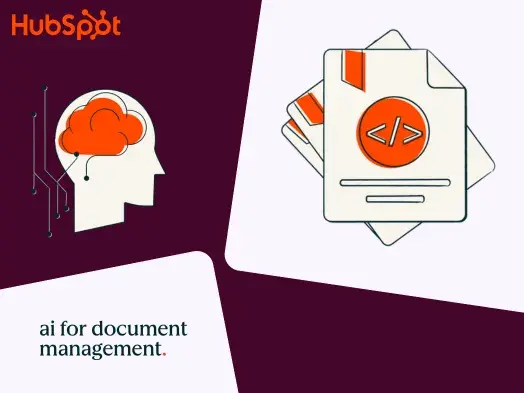
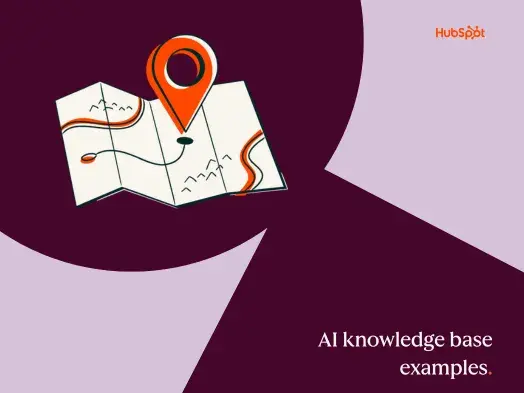
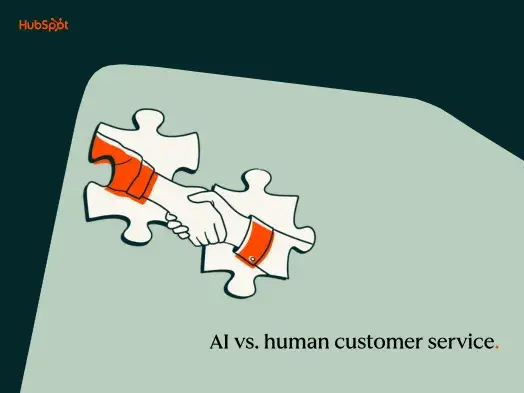

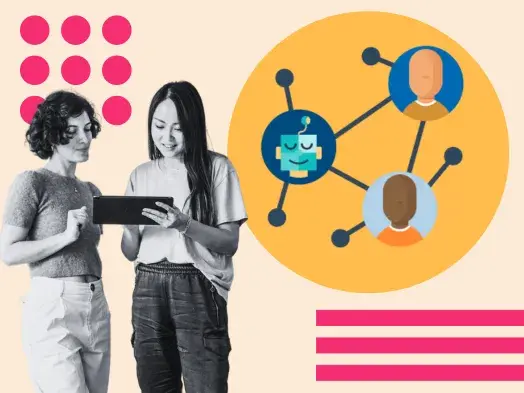
![How AI Can Unlock Customer Insights [+Expert Tips]](https://53.fs1.hubspotusercontent-na1.net/hubfs/53/customer-insights-ai-1-20241101-2082956.webp)
